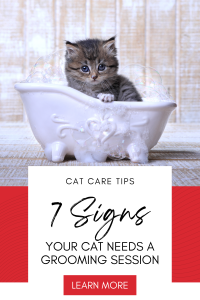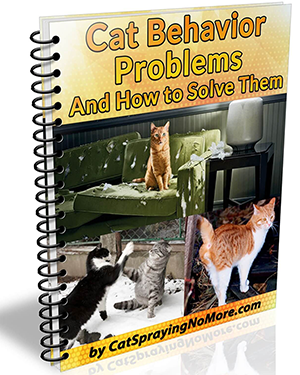7 Signs Your Cat Needs A Grooming Session

Decoding the Signals: 7 Undeniable Signs Your Feline Friend Needs a Grooming Session
Our feline companions are masters of subtle communication. From the gentle blink of an eye to the rhythmic purr, they have their own unique language. Among the many messages they convey, understanding when your cat needs a grooming session is crucial for their health, comfort, and overall well-being. While some cats are fastidious self-groomers, even the most diligent felines can benefit from a little extra help. Recognizing the signs early can prevent discomfort, matting, skin issues, and even potential health complications. Here are seven undeniable indicators that your beloved cat is due for some pampering:
1. The Tangled Tale: Noticeable Mats and Knots in Their Fur
One of the most obvious and concerning signs that your cat needs grooming is the presence of mats or knots in their fur. These tangled clumps are more than just unsightly; they can be incredibly painful for your cat. Mats typically form in areas where friction is common, such as behind the ears, under the legs, along the back, and near the tail.
The formation of mats begins with loose fur that doesn’t get brushed away. As the cat moves and grooms, this loose fur intertwines with healthy hair, creating small tangles. Over time, these tangles tighten and grow larger, forming dense mats that pull on the skin. This pulling can cause significant discomfort, restricting movement and even leading to skin irritation, bruising, and infections underneath the mat.
Furthermore, mats can trap moisture, dirt, and debris close to the skin, creating a breeding ground for bacteria and parasites. In severe cases, matted fur can even impede blood circulation. If you notice any mats or knots, especially if they are large or close to the skin, it’s a clear indication that your cat needs professional grooming assistance. Trying to remove large, tight mats yourself can accidentally injure your cat, so seeking expert help is always the safest option.
2. An Overabundance of Shedding: More Than the Usual Fluff
While shedding is a natural process for cats, an excessive increase in the amount of fur they are losing can be a sign that they need grooming. Regular brushing helps to remove loose and dead hair, preventing it from being shed all over your home. When this loose fur isn’t removed, it can contribute to matting and also means your cat is likely ingesting more hair during their own grooming sessions, potentially leading to more frequent and larger hairballs.
If you find yourself constantly sweeping up piles of fur, or if your cat’s coat appears thinner or less lustrous than usual, it could indicate that they need help removing the excess dead hair. A thorough brushing session can significantly reduce shedding and improve the overall health and appearance of their coat. For long-haired breeds, regular and consistent brushing is even more critical to manage shedding effectively.
3. A Dull and Lifeless Coat: Losing Their Natural Shine
A healthy cat’s coat should have a natural sheen and vibrancy. When a cat’s grooming needs are not being met, their fur can start to look dull, dry, and even greasy in some areas. This lack of luster can be due to a buildup of dead hair, dirt, and oils on the surface of the coat.
Regular brushing helps to distribute the natural oils produced by your cat’s skin throughout their coat, keeping it healthy and shiny. When these oils aren’t properly distributed, the coat can lose its natural protective barrier, making it more prone to dryness and tangling. A dull coat is a visual cue that your cat isn’t able to effectively groom themselves or that they have an excess of dead hair that needs to be removed through brushing.
4. Excessive Scratching and Licking: Signs of Skin Irritation
While some scratching and licking are normal cat behaviors, a noticeable increase in these activities can indicate skin irritation or discomfort, often linked to inadequate grooming. Mats and tangled fur can pull on the skin, causing itching and irritation. Trapped dirt, debris, and even parasites within the coat can also lead to excessive scratching and licking in an attempt to find relief.
If you observe your cat constantly scratching, particularly in specific areas, or if they are excessively licking, leading to bald patches or inflamed skin, it’s important to consider whether their grooming needs are being met. Addressing any matting or buildup of debris through grooming can often alleviate these skin issues. However, if the scratching and licking persist even after grooming, it’s crucial to consult with a veterinarian to rule out any underlying medical conditions or allergies.
5. Visible Dirt and Debris: A Coat That Needs a Clean Sweep
Cats are generally meticulous about their cleanliness, but sometimes they need our help to keep their coats free of dirt and debris. If you start noticing visible dirt, dust, or even small pieces of litter clinging to your cat’s fur, it’s a sign that they may not be able to groom themselves effectively.
This can be particularly true for older cats, overweight cats, or cats with mobility issues who may find it difficult to reach certain areas of their body. Long-haired cats are also more prone to accumulating outdoor debris in their fur. Regular brushing not only removes loose fur but also helps to dislodge any trapped dirt and keep their coat clean and healthy. In some cases, a bath might also be necessary to thoroughly cleanse their coat, especially if they’ve gotten into something particularly messy.
6. Strong Odor: More Than Just a Feline Scent
While cats have their own natural scent, a strong or unpleasant odor emanating from their coat can be a sign of a grooming issue. Trapped dirt, oils, and even mild skin infections under matted fur can contribute to an unpleasant smell. Additionally, if your cat is having difficulty grooming certain areas, such as around their rear end, it can lead to a buildup of waste and a noticeable odor.
Regular grooming, including brushing and potentially bathing, can help to remove the sources of these odors and keep your cat smelling fresh and clean. If the strong odor persists even after grooming, it’s important to consult with a veterinarian, as it could indicate an underlying health problem.
7. Changes in Behavior: Irritability or Reluctance to Be Touched
Sometimes, the signs that your cat needs grooming are more behavioral than physical. If your usually affectionate cat becomes irritable or reluctant to be touched in certain areas, it could be a sign that they have mats or skin irritation causing them discomfort. They may hiss, swat, or try to avoid being handled, especially in areas where their fur is tangled or their skin is inflamed.
Paying attention to these changes in your cat’s demeanor can provide valuable clues about their grooming needs. If you notice them becoming more sensitive or reactive to touch, gently examine their coat for any signs of matting or skin issues. Addressing these problems through careful grooming can often restore their comfort and their usual loving disposition.
Conclusion: Prioritizing Your Cat’s Grooming Needs
Recognizing these seven signs is key to ensuring your cat remains healthy, comfortable, and happy. Regular grooming is not just about aesthetics; it plays a vital role in preventing matting, reducing shedding, maintaining skin health, and even strengthening the bond between you and your feline companion. The frequency and type of grooming your cat needs will vary depending on their breed, coat length, age, and overall health. However, being vigilant for these telltale signs will help you determine when it’s time to reach for the brush, schedule a professional grooming appointment, or simply dedicate some quality time to pampering your purrfect friend. By understanding their subtle communication, you can proactively address their grooming needs and contribute to their long and fulfilling life.

Leave a Reply